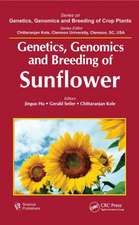The Nature of Culture: Based on an Interdisciplinary Symposium ‘The Nature of Culture’, Tübingen, Germany: Vertebrate Paleobiology and Paleoanthropology
Editat de Miriam N. Haidle, Nicholas J. Conard, Michael Bolusen Limba Engleză Hardback – 29 ian 2016
The volume provides a synthetic view on a) the different factors and mechanisms of cultural development, and b) expansions of cultural capacities in human evolution beyond the capacities observed in animal culture so far. It is an important topic because only a volume of contributions from different disciplines can yield the necessary breadth to discuss the complex subject. The model introduced and discussed originates in the naturalist context and tries to open the discussion to some culturalist aspects, thus the publication in a series with archaeological and biological emphasis is apt. As a new development the synthetic model of expansion of cultural capacity is introduced and discussed in a broad perspective.
| Toate formatele și edițiile | Preț | Express |
|---|---|---|
| Paperback (1) | 368.39 lei 38-44 zile | |
| SPRINGER NETHERLANDS – 31 mar 2018 | 368.39 lei 38-44 zile | |
| Hardback (1) | 394.44 lei 38-44 zile | |
| SPRINGER NETHERLANDS – 29 ian 2016 | 394.44 lei 38-44 zile |
Din seria Vertebrate Paleobiology and Paleoanthropology
- 15%
 Preț: 717.13 lei
Preț: 717.13 lei -
 Preț: 314.69 lei
Preț: 314.69 lei - 15%
 Preț: 724.12 lei
Preț: 724.12 lei - 18%
 Preț: 738.34 lei
Preț: 738.34 lei - 18%
 Preț: 741.37 lei
Preț: 741.37 lei - 15%
 Preț: 719.39 lei
Preț: 719.39 lei - 18%
 Preț: 635.90 lei
Preț: 635.90 lei -
 Preț: 411.04 lei
Preț: 411.04 lei - 20%
 Preț: 606.43 lei
Preț: 606.43 lei -
 Preț: 392.60 lei
Preț: 392.60 lei - 20%
 Preț: 617.45 lei
Preț: 617.45 lei - 15%
 Preț: 650.19 lei
Preț: 650.19 lei -
 Preț: 397.38 lei
Preț: 397.38 lei - 20%
 Preț: 619.33 lei
Preț: 619.33 lei -
 Preț: 391.27 lei
Preț: 391.27 lei -
 Preț: 431.73 lei
Preț: 431.73 lei -
 Preț: 433.47 lei
Preț: 433.47 lei - 24%
 Preț: 715.30 lei
Preț: 715.30 lei -
 Preț: 449.63 lei
Preț: 449.63 lei - 24%
 Preț: 763.00 lei
Preț: 763.00 lei - 15%
 Preț: 715.31 lei
Preț: 715.31 lei - 24%
 Preț: 636.35 lei
Preț: 636.35 lei - 20%
 Preț: 631.43 lei
Preț: 631.43 lei - 18%
 Preț: 792.19 lei
Preț: 792.19 lei -
 Preț: 380.72 lei
Preț: 380.72 lei - 20%
 Preț: 604.45 lei
Preț: 604.45 lei - 15%
 Preț: 708.75 lei
Preț: 708.75 lei -
 Preț: 404.29 lei
Preț: 404.29 lei - 24%
 Preț: 645.20 lei
Preț: 645.20 lei -
 Preț: 383.94 lei
Preț: 383.94 lei - 18%
 Preț: 898.13 lei
Preț: 898.13 lei -
 Preț: 403.75 lei
Preț: 403.75 lei
Preț: 394.44 lei
Nou
Puncte Express: 592
Preț estimativ în valută:
75.48€ • 79.00$ • 62.82£
75.48€ • 79.00$ • 62.82£
Carte tipărită la comandă
Livrare economică 27 martie-02 aprilie
Preluare comenzi: 021 569.72.76
Specificații
ISBN-13: 9789401774246
ISBN-10: 9401774242
Pagini: 151
Ilustrații: X, 151 p. 38 illus., 11 illus. in color.
Dimensiuni: 210 x 279 x 15 mm
Greutate: 0.74 kg
Ediția:1st ed. 2016
Editura: SPRINGER NETHERLANDS
Colecția Springer
Seria Vertebrate Paleobiology and Paleoanthropology
Locul publicării:Dordrecht, Netherlands
ISBN-10: 9401774242
Pagini: 151
Ilustrații: X, 151 p. 38 illus., 11 illus. in color.
Dimensiuni: 210 x 279 x 15 mm
Greutate: 0.74 kg
Ediția:1st ed. 2016
Editura: SPRINGER NETHERLANDS
Colecția Springer
Seria Vertebrate Paleobiology and Paleoanthropology
Locul publicării:Dordrecht, Netherlands
Public țintă
ResearchCuprins
The Nature of Culture: Research Goals and New Directions.- Lessons From Tasmania – Cultural Performance Versus Cultural Capacity.- Culture as a Form of Nature.- The Evolution of Hominin Culture and its Ancient Pre-Hominin Foundations.- Scarce but Significant: The Limestone Component of the Acheulean Site of Gesher Benot Ya'aqov, Israel.- Technological Transformations Imply Cultural Transformations and Complex Cognition.- Neanderthal Utilitarian Equipment and Group Identity: The Social Context of Bifacial Tool Manufacture and Use.- Tracing Group Identity in Early Upper Paleolithic Stone and Organic Tools – Some Thoughts and Many Questions.- Childhood, Play and the Evolution of Cultural Capacity in Neanderthals and Modern Humans.- Stone Tools: Evidence of Something in Between Culture and Cumulative Culture?.- The Island Test for Cumulative Culture in the Paleolithic.- Mountaineering or Ratcheting? Stone Age Hunting Weapons as Proxy for the Evolution of Human Technological, Behavioral andCognitive Flexibility.
Textul de pe ultima copertă
This volume introduces a model of the expansion of cultural capacity as a systemic approach with biological, historical and individual dimensions. It is contrasted with existing approaches from primatology and behavioural ecology; influential factors like differences in life history and demography are discussed; and the different stages of the development of cultural capacity in human evolution are traced in the archaeological record.
The volume provides a synthetic view on a) the different factors and mechanisms of cultural development, and b) expansions of cultural capacities in human evolution beyond the capacities observed in animal culture so far. It is an important topic because only a volume of contributions from different disciplines can yield the necessary breadth to discuss the complex subject. The model introduced and discussed originates in the naturalist context and tries to open the discussion to some culturalist aspects, thus the publication in a series with archaeological and biological emphasis is apt. As a new development the synthetic model of expansion of cultural capacity is introduced and discussed in a broad perspective.
Caracteristici
Introduces a systemic-approach model for the expansion of cultural capacity with biological, historical, and individual elements Provides a synthetic view of the different factors and mechanisms of cultural development and on expansions of cultural capacities in human evolution beyond the capacities observed in animal culture Traces the different stages of the development of cultural capacity in humans through the archaeological record Includes supplementary material: sn.pub/extras










